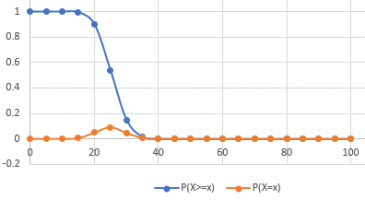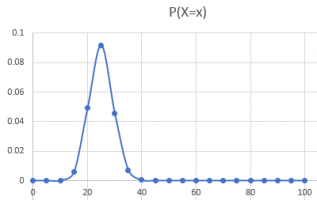Wile_E_Coyote
New member
- Joined
- Apr 25, 2022
- Messages
- 4
In an exam there are 100 questions. Each question has 4 options among which only one is correct. If a student marks the same options in all the questions then,
1) What is the probability of getting 20 or less than 20 correct answers out of 100?
2) What is the probability of getting 25 or more than 25 correct answers out of 100?
Which among the two is higher?
1) What is the probability of getting 20 or less than 20 correct answers out of 100?
2) What is the probability of getting 25 or more than 25 correct answers out of 100?
Which among the two is higher?


